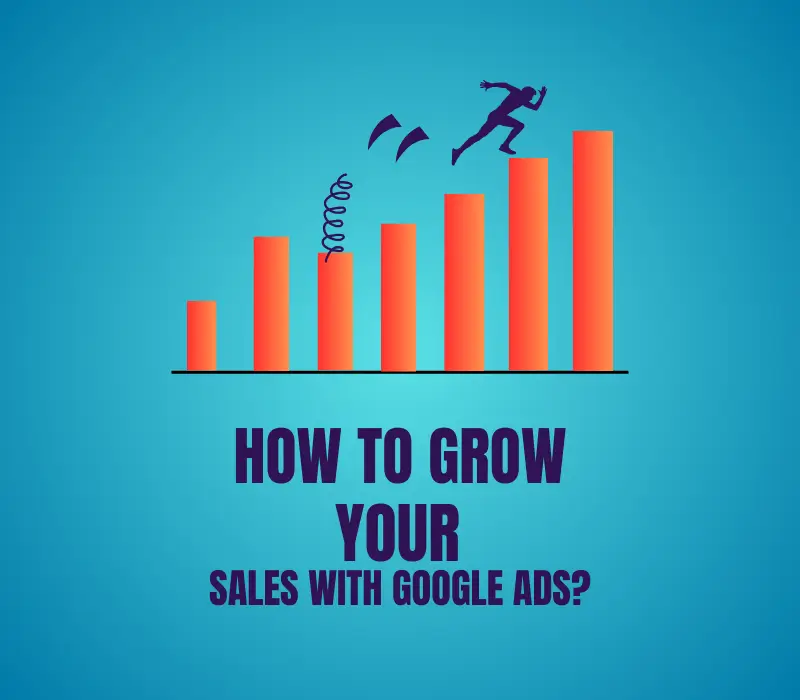How to Grow Your Sales with Google Ads?
Learn how to grow your sales with Google Ads through targeted strategies, effective keyword usage, compelling ad copy, and continuous optimization. Discover tips for increasing revenue, earning money, and achieving success with Google Ads. Introduction In today’s competitive market, businesses constantly seek ways to stand out and drive sales. Google Ads has emerged as a powerful tool for businesses of all sizes to reach potential customers and boost sales. But how do you effectively harness the power of Google Ads to grow your business? This article will guide you through everything you need to know about using Google Ads to increase your sales and achieve your marketing goals. Understanding Google Ads What is Google Ads? Google Ads is an online advertising platform developed by Google, where advertisers bid to display brief advertisements, service offerings, product listings, or videos to web users. It is one of the most effective ways to drive traffic to your website and convert visitors into customers. Key Components of Google Ads Google Ads has several key components that work together to create an effective advertising strategy. These include keywords, ad copy, bidding strategies, and audience targeting. Each element plays a critical role in determining the success of your campaigns. How Google Ads Work Google Ads operates on a pay-per-click (PPC) model, meaning you pay every time someone clicks on your ad. The ads are displayed based on the keywords you choose and the relevance of your ad to the user’s search query. The more relevant your ad, the higher it will rank, leading to more clicks and conversions. Setting Up a Google Ads Account Step-by-Step Guide to Creating a Google Ads Account Setting up a Google Ads account is the first step in leveraging this powerful tool. Here’s a simple guide: Go to the Google Ads homepage and click on “Start Now.” Sign in with your Google account or create a new one. Follow the prompts to set up your first campaign, including choosing your business goals, selecting your audience, and setting your budget. Review your settings and launch your campaign. Understanding the Google Ads Dashboard Once your account is set up, you will need to familiarize yourself with the Google Ads dashboard. This is where you’ll monitor your campaign’s performance, adjust settings, and optimize your ads. The dashboard provides insights into clicks, impressions, cost-per-click (CPC), and more. Choosing the Right Keywords The Importance of Keyword Research Keyword research is the backbone of any successful Google Ads campaign. The right keywords ensure your ads are shown to the right audience. Without thorough keyword research, your ads may fail to reach potential customers, leading to wasted budget and missed opportunities. Tools to Help with Keyword Research Several tools can assist you in finding the best keywords for your campaign: Google Keyword Planner: A free tool that helps you discover new keywords and see estimates on their search volume and cost. SEMrush: Offers in-depth keyword analysis and competitor insights. Ahrefs: Provides a comprehensive view of keyword rankings and difficulty. Tips for Selecting the Best Keywords When choosing keywords, consider the following tips: Focus on long-tail keywords, which are more specific and often less competitive. Think like your customers—what terms would they use to find your product or service? Avoid broad keywords that may attract irrelevant clicks. Creating Effective Ad Campaigns Different Types of Google Ads Campaigns Google Ads offers various types of campaigns, each designed to meet different marketing objectives: Search Campaigns: Ads appear on Google search results pages. Display Campaigns: Visual ads are shown across the Google Display Network. Shopping Campaigns: Showcase your products directly in Google search results. Video Campaigns: Ads appear on YouTube and other Google video partner sites. How to Structure Your Ad Campaigns? A well-structured campaign is crucial for success. Start by organizing your campaigns into ad groups based on themes or product categories. Each ad group should focus on a specific set of keywords and target a particular audience. This structure allows for more precise targeting and better performance tracking. Writing Compelling Ad Copy Your ad copy is your pitch to potential customers. It should be clear, concise, and compelling. Focus on the benefits of your product or service, include a strong call to action, and ensure your ad matches the intent of the keywords you’re targeting. Bidding Strategies for Google Ads Overview of Bidding Strategies Google Ads offers various bidding strategies to help you achieve your campaign goals: Manual CPC: You set the maximum amount you should be willing to pay for each click. Enhanced CPC: Google automatically adjusts your bids to maximize conversions. Target CPA: Focuses on getting as many conversions as possible at a specific cost per action. Target ROAS: Optimizes your bids to achieve a special return on ad spend. Manual vs. Automated Bidding Manual bidding gives you full control over your bids, while automated bidding uses Google’s algorithms to adjust bids in real time. While automated bidding can save time and optimize for specific goals, manual bidding is ideal if anyone prefers a hands-on approach. Tips for Optimizing Bids To optimize your bids: Regularly monitor your campaign’s performance and adjust bids based on the data. Consider bidding higher on keywords that are performing well. Use bid adjustments to increase or decrease bids based on location, device, and time of day. Targeting the Right Audience The Importance of Audience Targeting Effective audience targeting ensures your ads reach the people most likely to convert. By defining your target audience, you can create more personalized ads that resonate with potential customers. How to Define and Reach Your Target Audience Identify your ideal customer based on demographics, interests, and behavior. Use Google’s audience targeting options to refine your audience and reach the right people. Consider using custom audiences to target users based on their past interactions with your business. Using Demographics and Interests for Targeting Google Ads allows you to target users based on various demographics (age, gender, household income) and interests. This level of targeting helps you deliver more

